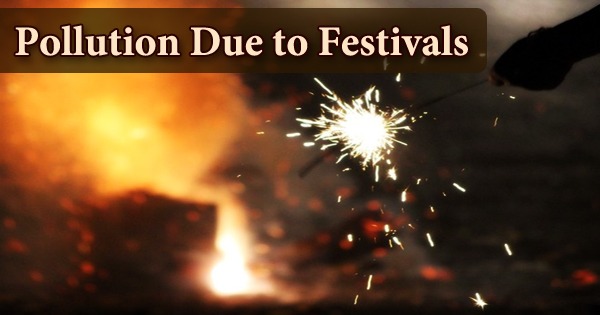The presence of radioactive chemicals in our environment is characterized as radioactive pollution, also known as radioactive contamination. These chemicals are little more than pollutants, as they have a significant negative impact on our ecosystem. This most hazardous kind of pollution can affect every living species, including humans, plants, and animals. Radioactive waste is often produced as a by-product of nuclear power generation and other nuclear-related tasks such as nuclear fusion, research, and medicine. Government bodies control radioactive waste to safeguard human health and the environment. Because radioactivity naturally decreases with time, radioactive waste must be separated and kept out of unsuitable disposal facilities for a short period. The amount of time it takes to store radioactive waste is determined on the kind of waste and radioactive isotopes involved. Radiation, often known as radioactivity, is the process of some elements’ radioisotopes decaying. The radioisotope transforms from one isotope to another and emits certain kinds of radiation during decay. Isotopes are atoms of the same element with varying atomic masses but the same atomic number. Nuclear energy is closely related to radioactive contaminants. Uranium dioxide (UO2), which is not particularly radioactive, is utilized in nuclear power plants. Yellowcake (U3O8) is refined and subsequently transformed to uranium hexafluoride gas (UF6). Radiation is made up of a variety of particles, including alpha, gamma, and beta particles, as well as a type of electron known as conversion electrons. When radiation comes into contact with a person’s skin, it is not always feasible to detect it. Radioactive wastes are made up of a variety of radioisotopes that produce ionizing radiation that is hazardous to both humans and the environment. These isotopes produce various types and quantities of radiation that persist for varying amounts of time. Nuclear power plants, improper disposal of nuclear waste, uranium mining, and nuclear weapons are some of the most prevalent causes of nuclear waste or radiation contamination. A half-life exists for all radioisotopes in the trash. The time it takes for a radioactive substance to lose 50% of its radioactivity varies, and all radioactive waste eventually degrades into non-radioactive components. Many active components may be found in rocks, soils, and water, including radium 224, uranium 235, uranium 238, thorium 232, radon 222, potassium 40, and carbon 14.
All biological forms have been exposed to some degree of low-level radiation since the earth’s inception (natural background radiation). According to scientists, this exposure was crucial in the development of life. However, numerous human activities have expanded the sources of radiation in today’s scientific and industrial environment. Breach incidents at nuclear power plants are a major source of radioactive contamination, as they frequently result in the discharge of radioactive materials into the environment. This danger tends to rise as nuclear energy becomes a more important alternative for fossil fuels. Atomic weapons testing is part of the nuclear weapons manufacturing process. These tests release enormous amounts of radioactive elements and other hazardous chemicals into the atmosphere. Chemical spills are another factor to consider. The radioactive substances are discharged into the atmosphere and onto the ground as a result of poor shipping or container breaking. Unscrupulous scientific studies using radiation are another major source of radioactive contamination. Water pollution washes radioactive elements from the ground into bodies of water, where aquatic creatures absorb them. Through food chains, dangerous chemicals from these creatures reach the human body. Cosmic rays from space continually shower down on the Earth’s atmosphere. These generally contain protons, a few electrons, helium ions, and other elements that interact with the Earth’s atmosphere on a regular basis. Radium and its decay products are occasionally found in oil and gas sector wastes. Radium-rich concentrates can be extremely concentrated. Small quantities of short-lived radioactivity can be found in paper, rags, tools, clothes, filters, and other industrial wastes. Humans may get cancer, infertility, and disability as a result of the radiation. Furthermore, prolonged exposure to high levels of radiation from nuclear waste or radioactive chemicals can result in skin blisters and burns, as well as death. Its consequences are frequently deadly. People who live or work near radioactive material, such as mine employees, medical professionals, nuclear power plant technologists, and others, are more vulnerable to radiation risks. Accidents in nuclear reactors are the source of the most significant dangers. The kind of radiation, the absorbed dosage, the rate at which the dose was absorbed, and the radiosensitivity of the tissues involved all influence the severity of the injury. High-altitude plants have also been claimed to have produced polyploids as a radiation defense strategy. There are various ways to dispose of radioactive waste, including preventing leakage from radioactive materials in nuclear reactors, businesses, and labs. Radioactive waste must be disposed of in a safe and secure manner. They must be converted into innocuous substances or stored in a secure location so that they do not degrade in an uncontrollable manner. Only a small amount of radioactive material should be disposed of in wastewater. In dangerous regions, regular monitoring by frequent sample and quantitative analysis is required. Radioactive contamination is one of the most common forms of pollution that has negative consequences for all living things. The government and the people must devise strategies to eliminate and control it.















